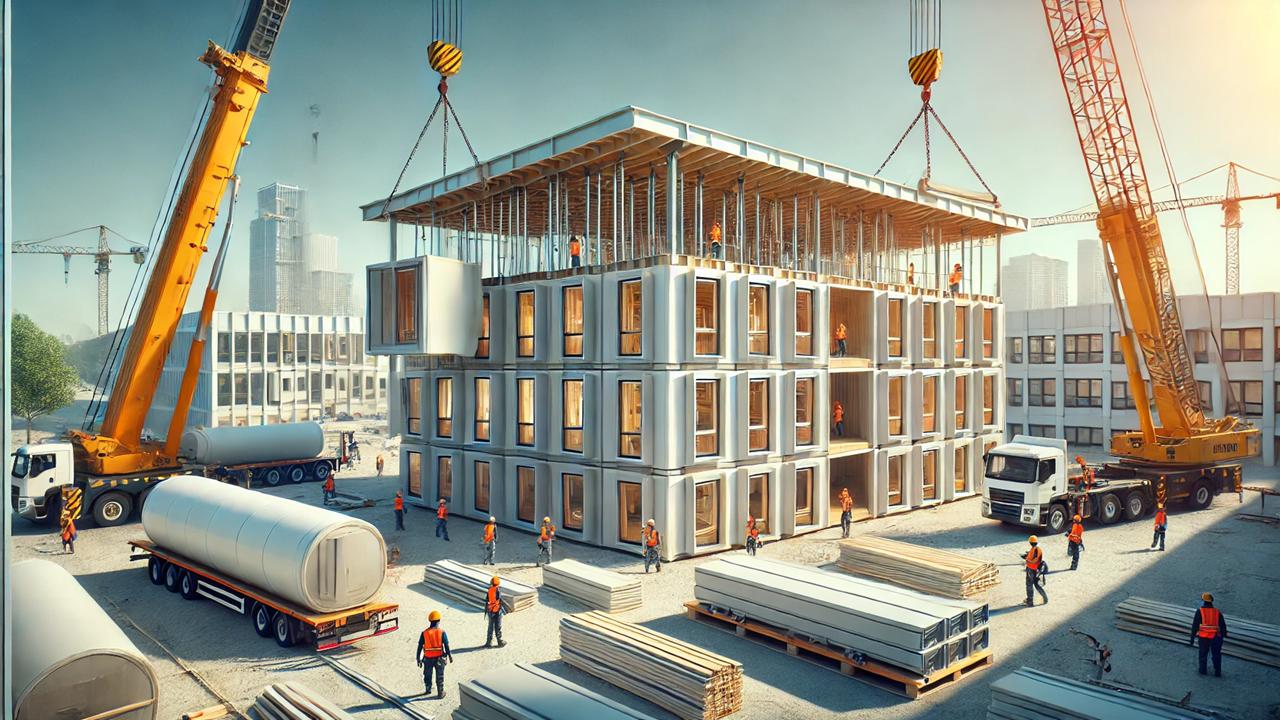The demand for off site construction has grown as it offers increased speed, cost savings, and flexibility in building projects. However, to achieve these benefits, careful planning and coordination are required.
Here’s a guide on implementing off-site construction effectively, ensuring a successful transition from factory floor to site.
1. Prioritise Thorough Planning
Successful off-site construction relies on careful pre-construction planning. Before any modules or components are created, collaborate with architects, engineers, and contractors to establish detailed plans. Every element must be defined and verified, from the design specifications to materials, since any design changes after production begins can lead to costly delays. Using 3D modelling and building information modelling (BIM) can facilitate precision and help detect issues early on.
2. Foster Strong Collaboration Among Stakeholders
Effective communication among all stakeholders—architects, contractors, suppliers, and manufacturers—is essential to ensure the smooth flow of information. By establishing clear roles and responsibilities, potential miscommunications or delays can be minimised. Regular meetings and updates keep everyone aligned, and any changes or adaptations can be addressed promptly. For complex projects, consider using integrated project delivery (IPD) methods, which encourage collaboration and transparency.
3. Ensure Quality Control Standards
Since much of the construction occurs off-site, implementing strict quality control measures is critical. Ensure that your chosen manufacturer follows industry standards and meets certification requirements. Conduct periodic inspections to verify that all components meet the quality standards outlined in the project plan. Quality control not only guarantees structural integrity but also helps maintain consistency across modular units, making on-site assembly smoother.
4. Plan for Efficient Transportation and Assembly
The logistics of transporting pre-fabricated modules to the construction site require meticulous coordination. Modules must be designed for easy transportation and assembled quickly on-site to prevent any damage. Choose a transportation provider with experience in modular construction, as they’ll have the necessary expertise to handle large and delicate components.
5. Use Technology for Improved Project Management
Modern project management software can streamline communication, manage schedules, and provide real-time updates, which are essential for off-site construction projects. Digital tools can track progress, inventory, and timelines, making it easier to ensure that all elements align with the project plan. Project management technology also allows you to monitor the entire process from manufacturing to on-site assembly, ensuring a coordinated approach.
Conclusion
When implemented effectively, off site construction can result in substantial time and cost savings, along with consistent quality. By prioritising planning, fostering strong collaboration, ensuring quality control, planning transportation efficiently, and utilising technology, companies can maximise the benefits of this construction method, bringing projects to completion faster and with fewer complications.

